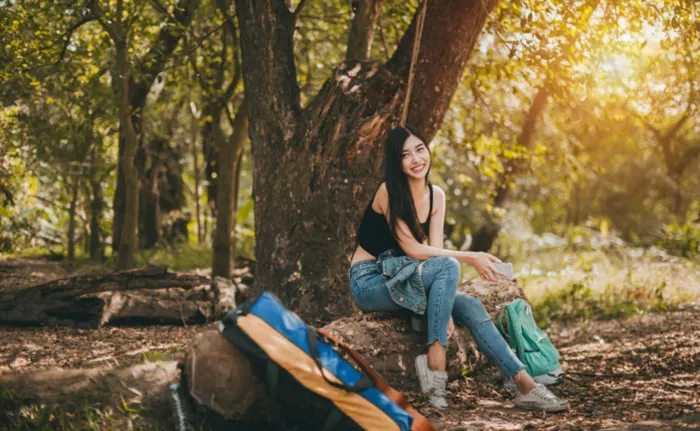Camping alone can be an exhilarating and peaceful experience. The solitude offers a unique opportunity for personal reflection and a deeper connection with nature. However, it also brings specific risks and considerations that require careful planning. This article provides a detailed exploration of the safety aspects of solo camping, focusing on preparation, precautions, and safety strategies.
Understanding the Risks of Solo Camping
Physical Safety
Solo camping can expose you to various physical risks, including accidents, injuries, and health issues. When you’re alone, there’s no one to assist you in an emergency. It’s crucial to assess your physical condition and preparedness before embarking on a solo camping trip. Here are some factors to consider:
Health Conditions: Ensure you are in good health and can handle the physical demands of camping. If you have any medical conditions, consult with a healthcare professional before your trip.
Accidents and Injuries: Without immediate help, even minor injuries can become serious. Familiarize yourself with basic first aid and carry a well-stocked first aid kit. Learn how to use it effectively and ensure it includes supplies for treating common camping injuries like cuts, scrapes, and burns.
Weather Conditions: Extreme weather can pose significant risks. Check weather forecasts and be prepared for sudden changes. Pack appropriate clothing and gear for various weather conditions.
Wildlife Encounters
Camping alone increases the likelihood of encounters with wildlife. While most wildlife is not aggressive, some species can be dangerous. To minimize risks:
Understand Local Wildlife: Research the wildlife in the area where you’ll be camping. Know which animals are common and their behavior patterns.
Food Storage: Store food properly to avoid attracting animals to your campsite. Use bear-proof containers if you’re in bear country.
Avoid Wildlife: Keep a safe distance from wildlife and never approach or feed them. Educate yourself on what to do if you encounter a potentially dangerous animal.
Navigation and Getting Lost
Getting lost while camping alone can be a serious problem. Here are steps to prevent and address navigation issues:
Route Planning: Plan your route carefully and familiarize yourself with the area. Use detailed maps and a GPS device to aid navigation.
Navigation Skills: Improve your navigation skills, including map reading and compass use. Practice these skills before your trip.
Inform Someone: Always inform someone of your plans, including your intended route and expected return time. This way, someone will know if you fail to return as planned.
Preparation for Solo Camping
Proper preparation is key to ensuring a safe solo camping experience. Here are some essential preparation steps:
Gear and Equipment
Tent and Shelter: Choose a tent suitable for the weather conditions and terrain. Ensure it’s easy to set up and provides adequate protection.
Sleeping Gear: Pack a high-quality sleeping bag and sleeping pad for comfort and warmth. Consider the temperature ratings to ensure they match the conditions you expect.
Cooking and Food: Bring a portable stove, cooking utensils, and non-perishable food items. Plan your meals and pack enough food for the duration of your trip.
Safety Gear: Carry safety gear such as a first aid kit, multi-tool, flashlight or headlamp, and extra batteries. A whistle and a fire starter can also be valuable.
Skills and Knowledge
Survival Skills: Learn basic survival skills, including how to build a fire, purify water, and find shelter.
First Aid: Take a first aid course to be prepared for medical emergencies. Know how to treat common injuries and illnesses.
Local Regulations: Understand and follow local camping regulations and guidelines. Respect wildlife and natural resources.
Emergency Planning
Emergency Contacts: Keep a list of emergency contacts and important phone numbers. Include local emergency services and park rangers.
Emergency Kit: Prepare an emergency kit with essentials like a first aid manual, emergency blanket, and signaling devices.
Contingency Plans: Have a plan for various emergencies, including getting lost, injury, or severe weather. Know your exit strategy and how to signal for help if needed.
SEE ALSO: Is It Safe to Use a Propane Camping Stove Inside?
Best Practices for Solo Camping
Implementing best practices can enhance your safety and enjoyment during a solo camping trip. Here are some key practices to follow:
Campsite Selection
Choose a Safe Location: Select a campsite that is away from potential hazards like falling rocks, unstable ground, or flood zones. Look for flat, well-drained areas.
Proximity to Water: While being close to water is convenient, avoid setting up camp too near it. Flooding and wildlife can pose risks.
Campfire Safety
Fire Management: If campfires are allowed, build them in designated fire rings and keep them small. Never leave a fire unattended and ensure it’s completely extinguished before leaving.
Fire Safety Gear: Carry a fire extinguisher or water to control the fire if necessary. Follow local fire regulations and guidelines.
Staying Connected
Communication Devices: Bring a communication device such as a satellite phone or emergency beacon. Cell phone reception may be limited in remote areas.
Check-In: Regularly check in with someone back home, especially if your trip is extended. Update them on your status and location.
Maintaining Awareness
Stay Alert: Be aware of your surroundings and any changes in your environment. Pay attention to weather conditions, wildlife activity, and other potential hazards.
Trust Your Instincts: If something feels off or you encounter a situation that makes you uncomfortable, trust your instincts and take appropriate action.
Conclusion
Solo camping can be a rewarding experience if approached with proper preparation and safety measures. Understanding and mitigating risks, preparing thoroughly, and following best practices can ensure a safe and enjoyable solo camping adventure. Remember that while solitude offers unique benefits, it also requires you to be self-reliant and vigilant. By taking the necessary precautions, you can fully embrace the freedom and tranquility that solo camping has to offer.
By considering the above aspects, you can confidently enjoy the peace and solitude of solo camping while staying safe and prepared.

